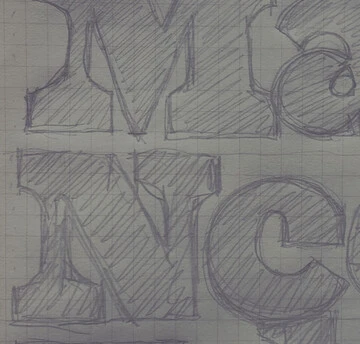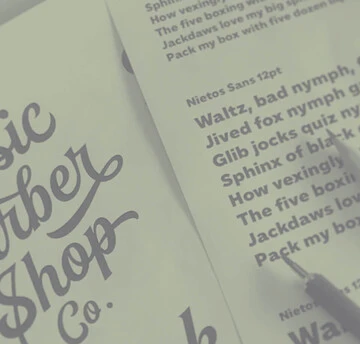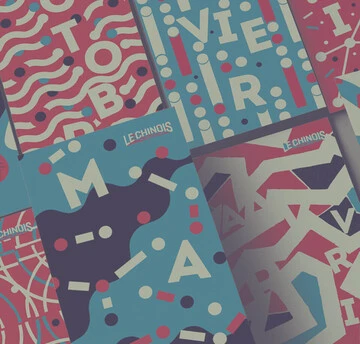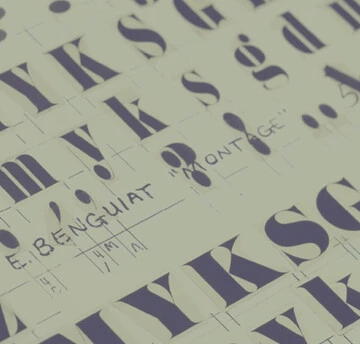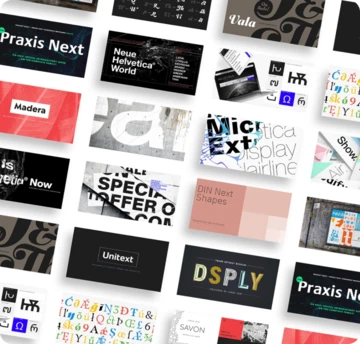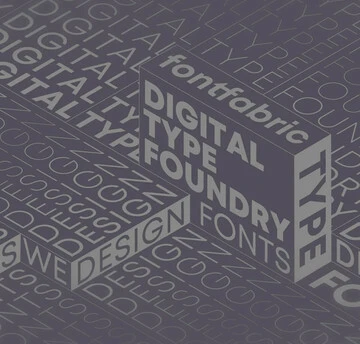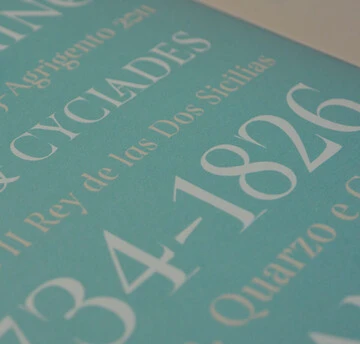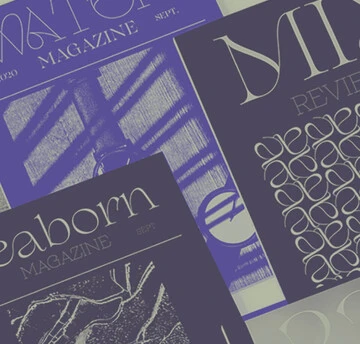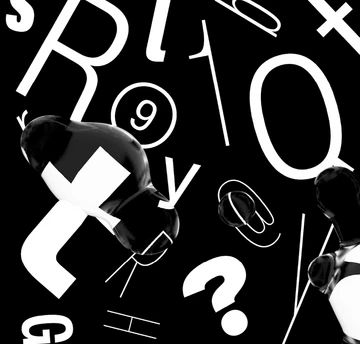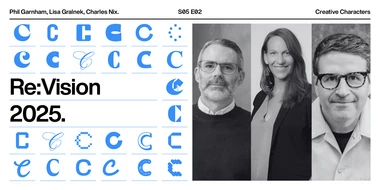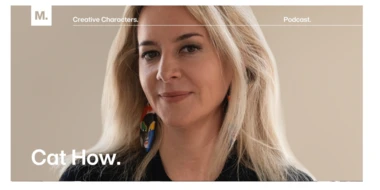Q&A from the 2025 Re:Vision webinar.

Will AI affect typeface originality and licensing?
It’s bound to impact both. For some, it might create a closed loop, while for others, it could act as a catalyst, pushing designers to respond creatively. Regarding licensing, it’s still uncertain. Nobody fully knows who owns the output of generative AI. It’ll take time to sort out.
Since we don’t yet know the licensing outcomes, I’ll focus on originality. I think AI is positive for type design originality because it challenges designers to prove their value. Designers will need to bring their unique perspectives and ideas into the process—something AI can’t replicate, as it can only work within known parameters.
What’s your recipe for staying creative, efficient, and aesthetically pleasing all at the same time?
For me, it’s about time and thought. I need space to think creatively, and I deliberately build that into my schedule. I go for a run or take a shower daily—these are the moments when I’m most creative. It’s not when I’m physically creating but when I’m reflecting on what I want to make. That’s when breakthroughs happen.
We’re all different. For me, staying creative is about looking after yourself and doing what brings you joy. If you don’t enjoy what you’re doing, something’s wrong. Find what excites you, what makes you unique, and pursue it. That becomes your inner drive—your reason to explore and create.
How would you address this common view that typography design has been mistaken interchangeably with minimalistic design over and over again?
Is that a common view?
Minimalistic typography has been a hallmark of this century, partly because the digital realm is still new. To make sense of this space, we tend to gravitate toward simplicity and clarity, which reinforces minimalism. Over time, it becomes self-referential, as designers emulate each other. However, as we approach 2025, we’re starting to see more diversity in the branding landscape, breaking away from that earlier, strict minimalism.
Typography is a big part of digital design—90% of UX and UI design is typography. It’s hard to separate type from the context it lives in and the vibe it creates. I wouldn’t call it a mistake to associate typography with minimalism. I see typography as an integral part of design itself.
How do you envisage the future of type within the realm of animation and movement design?
I see it through the lens of talented people in that space—it’s not my area, but I admire those who do it well. What excites me is exploring the three-dimensionality of typography. What’s on the other side of those letters? What does it mean to walk through a typographic space? That’s the future I’d like to see in animation and movement design.
The future of movement in typography will be more organic. It won’t follow rigid, pre-defined spaces. Instead, it will adapt intuitively, responding to its environment. I think we’ll see a blend of AI, interactivity, and variable fonts playing a major role in the next decade.
Type should be a method for motivating people to achieve peace all around the world. How can you justify this in light of the type industry? Also, do you think AI can have a role in this process?
We believe typography can motivate peace globally, and we’ll explore that further in activation 4 for Conflict & Peace. Monotype is focusing on collaboration and supporting creatives worldwide—type designers, makers, and brands. AI will expand designers’ capabilities, allowing us to explore new possibilities in this space. Typography is a powerful tool for communication and connection.
As typography increasingly shifts from static forms to dynamic, interactive and adaptive systems, how would you envision type designers balancing creative experimentation with maintaining readability, accessibility, and cultural sensitivity across diverse global audiences?
This is the key question we’re asking with Re:Vision. How do we, as designers, act as responsible global citizens? It’s our duty to create accessible, culturally sensitive work while adapting to change. Designers still control the process—they create the brief and establish boundaries. It’s up to us to make informed, thoughtful decisions, ensuring that cultural shifts are met with respect.
Distinction is probably the biggest weight to put against AI. What would you suggest to improve on being distinctive?
This is design 101. Distinction is critical. To stay distinctive, you need to reframe the problem, experiment, and critique both your work and others’. AI can be a collaborator—helping with tedious tasks and refining ideas—but the creative vision should come from you.
Since we cannot avoid being inspired to some level by what already is has already been created, how do we tackle the fear of unknowingly plagiarizing others and not being creative enough in the process of making new type?
Build confidence in your process and critical thinking. Invest in yourself—your skills, knowledge of typographic history, and your ability to recognize originality. Develop a strong sense of awareness about avoiding repetition, and trust in your creative approach.
The Brodovich style of fonts for magazines pretty much disappeared. How does the fashion for these types work? Does it exist or are trends and tendencies changing so fast now?
This is the reason that we moved away from strictly reporting on typographic trends. Trends are less about the forms themselves and more about the motivations behind them. Changes in trends indicate designers are breaking free from expectations, which is exciting.
Your views on – Stay Indie: Indie Font Foundry, traditional limited distribution vs. Mass reach: Google/Adobe Typekit/Monotype?
If you feel strongly about staying independent, follow that path. There’s room for both independent and mainstream approaches in today’s culture—they’re not mutually exclusive.
Create a foundry that feels authentic to you—one that reflects who you are, your audience, and the designers you want to collaborate with. Everyone’s approach is different, so follow what feels right.
What tools or software would you recommend using to explore creating custom fonts?
The Glyphs app is essential, but also experiment with unconventional tools like markers, tape, paint, or anything that inspires you to make a mark.
You mentioned design systems and integrating them into AI. Has anyone on the panel had experience or examples they could share on self-healing design systems?
Brands are living things. They’re created with a goal in mind, but they need to evolve to stay relevant. AI could play a role in this evolution.
I see a future where AI helps brands adapt in real-time, correcting and evolving designs as they engage with audiences. This could lead to more intuitive and effective branding systems.
Can you talk us through the process of selecting fonts when you take on a new project?
It’s an age-old question, and the answer is not easy, because nobody knows which typeface you should use. The process starts with understanding the problem you’re solving. Frame and reframe it, then rely on experience and research to find a solution. Choosing a typeface requires careful consideration of context, tone, and purpose.
Monotype has tools like the Sonotype app, which combines AI with design insights to help find fonts aligned with a brand’s values and sentiment. Stay tuned for more innovations.
How do you handle resistance to change when it comes to AI?
It’s important to stay open to new possibilities. Evaluate whether these tools help or hinder, and experiment with them in unexpected ways. Change is inevitable. Embrace it or get left behind.
Do you see the public being receptive to the importance of visual exploration of typography, particularly within B2B businesses?
Absolutely. You might take wordmarks as a case, can a typeface speak enough without the need for a pictorial mark? Typography is the visual language of communication. As executive creative directors, it’s our job to educate businesses about its importance, and we find them receptive. Typography often works subconsciously—people feel its impact even if they’re not actively aware of it.
AI and generative tools are capable of rapidly adapting and replicating visual styles at a fast pace. How can brands strategically position themselves to maintain unique visual type identities and avoid falling into a sea of homogeneity while still remaining current?
First, know yourself. AI—or any designer—can help mimic someone else’s look, but if you don’t have a clear understanding of your identity, your designs will lack authenticity. Differentiation starts with knowing what makes you unique. If you haven’t firmly established what differentiates you from every other business, you’ll have difficulty creating a differentiated visual persona.
Does AI bring different challenges for people who have already achieved professional success, built technical skills and confidence, and for people who might still be building their taste and learning the basics? Can this tool disrupt the evolution of the designer?
Absolutely. It disrupts both experienced designers and those still learning. But change is part of growth, and design evolves quickly.
Change should be viewed with optimism. These tools are developed to help us grow and innovate, so embrace the opportunities they bring. There’s a reason we invest so much time and money and developing new creative tools and ways of thinking, because it’s the natural order. It’s how we grow. It’s how we progress as a society.
Nowadays, everyone has access to the same creative AI tools as trained designers. How do you manage clients when everyone is a designer due to the easy access to the tools we use?
It’s about finding your voice and bringing yourself into the work. Use AI as a collaborator to explore intersections of ideas and uncover opportunities.
I’d challenge the idea that everyone’s a designer. Everyone is creative, but the popularization of tools has made more people art directors—choosing from established designs. True design still requires expertise and thoughtful decision-making.
The future is type.
Can’t get enough of Re:Vision? Download the report here if you haven’t, or watch the recording of this year’s webinar for more inspiration.
